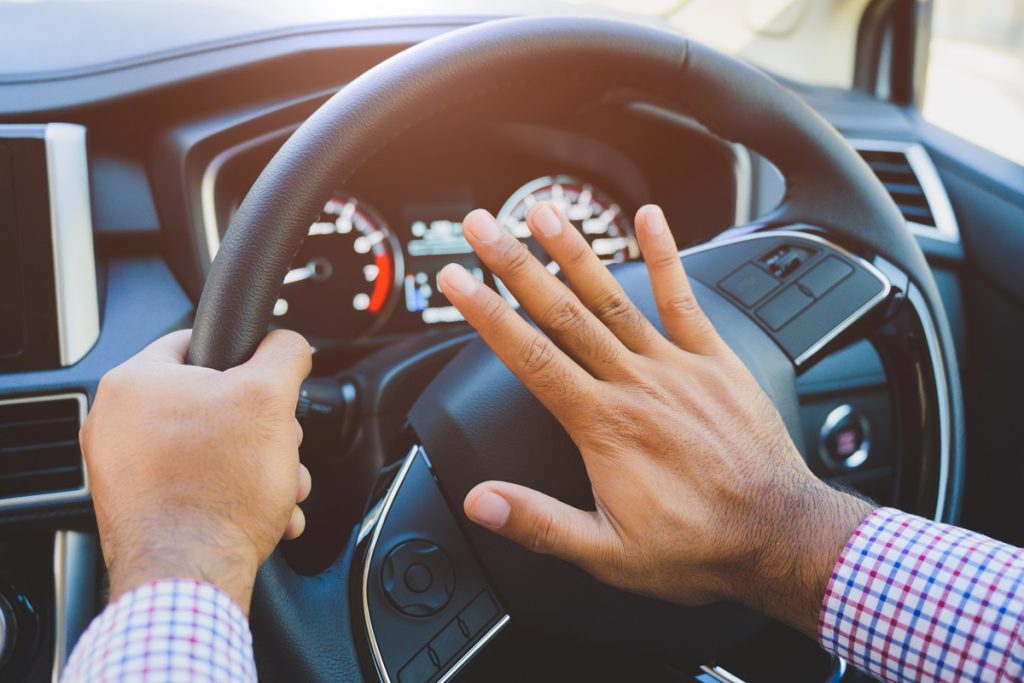Riding a motorcycle requires skill, awareness, and continuous learning to stay safe and maximize performance. Many riders overlook essential techniques that can prevent accidents, enhance control, and improve the overall riding experience. Mastering these methods not only boosts confidence but also reduces the chances of making costly errors on the road. From braking strategies to cornering precision, every detail matters in becoming a skilled rider.
Proper Throttle Control

Maintaining smooth throttle control ensures steady acceleration and prevents sudden jerks that can destabilize the bike. A controlled throttle application improves traction, fuel efficiency, and overall riding comfort, allowing for a more enjoyable experience. Poor throttle management can lead to unnecessary wear on the engine, increased fuel consumption, and a rougher ride.
Smooth Braking Techniques

Using both front and rear brakes in harmony allows for efficient stopping without skidding or losing balance. Gradually squeezing the front brake while applying moderate rear brake pressure helps maintain control and stability during sudden stops. Improper braking habits can cause excessive wear on brake components, reduce stopping power, and increase accident risks.
Mastering Countersteering

Countersteering helps riders make quick directional changes at higher speeds by subtly pushing the handlebars in the opposite direction of the intended turn. This technique allows for smoother and safer navigation through curves, tight corners, and emergency maneuvers. Failing to countersteer properly can result in slow, inefficient turns and reduced bike stability.
Maintaining Correct Riding Posture

Proper body positioning reduces fatigue and enhances bike control, ensuring comfort and safety during long rides. Keeping the knees close to the tank, a relaxed grip on the handlebars, and a slight forward lean improve aerodynamics and balance. Poor posture can lead to discomfort, back pain, and compromised maneuverability, especially on extended journeys.
Related: 15 Affordable High Performance Cars That Will Blow Your Mind In 2025
Cornering with Precision

Approaching corners at the correct speed, leaning the bike smoothly, and maintaining a steady throttle ensures a controlled and safe turn. Applying gentle throttle mid-turn helps stabilize the bike while ensuring a smooth exit. Misjudging a corner can lead to oversteering, reduced grip, and the risk of sliding out of control.
Related: 12 EVs With Insane Repair Costs No One Warned You About
Understanding Traction Management

Knowing how traction interacts with different road surfaces helps riders maintain grip and avoid slides. Wet, gravelly, or oily roads require careful throttle adjustments, smooth braking, and reduced lean angles. Overestimating available traction can lead to sudden loss of control, making unexpected road conditions dangerous for unprepared riders.
Related: 11 Formula 1 Circuits That Gave Champions Their Worst Nightmare
Effective Lane Positioning

Choosing the best lane position improves visibility, enhances safety, and maximizes reaction time to avoid obstacles. Staying out of blind spots and maintaining distance from vehicles ensures better control and decision-making. Poor lane positioning increases vulnerability to sudden lane changes, road debris, and limited escape routes.
Related: 15 Fastest Cars Every Major Brand Is Building Right Now
Clutch and Gear Shifting Techniques

Smooth shifting improves acceleration efficiency, extends engine longevity, and reduces sudden jerks that can unsettle the bike. Properly using the clutch while transitioning between gears prevents mechanical strain and ensures fluid power delivery. Aggressive or poorly timed shifting can cause excessive wear on transmission components, leading to performance issues and costly repairs.
Related: 11 Best-Looking SUVs of 2025 That Rival Other Cars
Defensive Riding Awareness

Being aware of surrounding traffic, scanning the road ahead, and anticipating potential hazards are crucial for preventing accidents. Defensive riding ensures quick reaction times, allowing riders to adjust speed and positioning proactively. Neglecting awareness increases vulnerability to sudden obstacles, reckless drivers, and unexpected road conditions.
Related: 14 Shocking Reasons Owning a Car Could Soon Be Obsolete
Emergency Braking Skills

Applying maximum braking force without locking up the wheels requires practice and control. Progressive braking, gradually increasing brake pressure while maintaining balance, ensures effective stopping power. Panic braking without proper technique can cause the bike to skid, resulting in a loss of control and possible crashes.
Related: 11 Best 9-Seater SUVs That Are Surprisingly Luxurious And Practical In 2025
Avoiding Target Fixation

Focusing too much on an obstacle instead of an escape route increases the risk of collision. Training the eyes to look where you want to go, rather than staring at hazards, ensures a smoother and safer ride. Target fixation often results in riders unintentionally steering into danger instead of avoiding it.
Related: 11 Hidden Cybersecurity Threats That Could Shut Down Your Car Instantly
Managing Fatigue on Long Rides

Taking frequent breaks, staying hydrated, and stretching periodically reduces fatigue and maintains focus. Long rides can be mentally and physically exhausting, impacting reaction time and decision-making. Ignoring fatigue increases the risk of lapses in concentration, slow reflexes, and difficulty in handling the motorcycle effectively.
Related: 13 Shocking Truths About The Trade War That Dealership Won’t Tell You
Riding in Various Weather Conditions

Adjusting speed, braking distances, and lean angles when riding in rain, wind, or fog improves control and stability. Wet roads require gentle throttle inputs, extended stopping distances, and careful maneuvering to prevent hydroplaning. Ignoring weather conditions can result in unexpected loss of traction and increased accident risks.
Related: 14 New Electric Cars You Need To Know About In 2025
Slow-Speed Maneuvering

Balancing and controlling the bike at low speeds is essential for navigating through traffic, parking lots, and tight spaces. Keeping slight throttle application while using the rear brake helps maintain stability and prevent tipping over. Struggling with slow-speed control can lead to unnecessary drops, embarrassing mishaps, and costly repairs.
Related: 15 Insanely Complicated Cars That Mechanics Avoid
Understanding Motorcycle Weight Distribution

Shifting body weight appropriately during acceleration, braking, and cornering improves handling and overall stability. Maintaining proper balance ensures the bike remains responsive, particularly in high-speed or off-road conditions. Poor weight distribution can cause instability, making tight turns and sudden stops more challenging.
Related: 12 Game-Changing Features In Ford’s EV Gear Shifter That Will Make You Rethink Electric Cars
Mastering these riding techniques is essential for every motorcyclist aiming to ride safely and confidently. Proper control of the throttle, brakes, and body positioning enhances stability and responsiveness, allowing riders to navigate different conditions effectively. Defensive riding skills, weather adaptations, and hazard awareness further minimize risks and promote safe riding habits. Developing these essential techniques reduces costly mistakes, prolongs the life of the motorcycle, and significantly improves the overall riding experience.
Disclaimer: This list is solely the author’s opinion based on research and publicly available information.
13 Monster Engines That Push The Limits Of What’s Even Possible

Some engines redefine performance, pushing the boundaries of power, speed, and engineering brilliance. These powerplants deliver mind blowing horsepower, cutting edge technology, and durability that defies logic. Here are 13 monster engines that prove there are no limits to what’s possible.
Read it here: 13 Monster Engines That Push The Limits Of What’s Even Possible
11 Hidden Gem Islands In Europe You Can Drive To In A Campervan

Europe is home to some breathtaking islands, many of which can be reached without boarding a plane or ferry. These hidden gems offer stunning landscapes, charming villages, and unspoiled nature, perfect for an unforgettable campervan adventure. Whether you’re looking for dramatic coastlines, lush green scenery, or a peaceful retreat away from the crowds, these islands provide the ultimate road trip experience. Here are 11 hidden gem islands in Europe you can drive to in a campervan.
Read it here: 11 Hidden Gem Islands In Europe You Can Drive To In A Campervan
12 Car Brands That Might Not Make It Through the EV Takeover

The electric vehicle revolution is reshaping the automotive industry, and not every car brand will survive the transition successfully. Legacy automakers with outdated strategies, struggling finances, or a slow approach to electrification could face serious trouble in the coming years ahead. As governments push for EV adoption and consumers demand better battery technology, these brands may struggle to keep up, or disappear entirely from the market forever.
Read it here: 12 Car Brands That Might Not Make It Through the EV Takeover
You’ll love these related posts:
- 11 Performance Beasts That Might Be The Mustang GTD’s Worst Nightmare
- 11 Shocking Ways You’re Killing Your Manual Car Without Realizing It
- 12 Popular Asian Cars That Are Secretly Made in America
- 11 German Automakers You’ve Never Heard of But Need To Know
- 13 Drop-Dead Gorgeous Mercedes Models That Will Make You Stare


